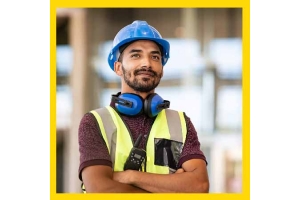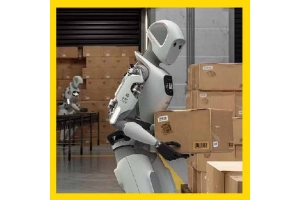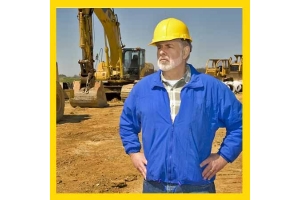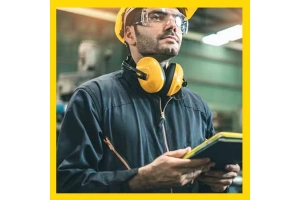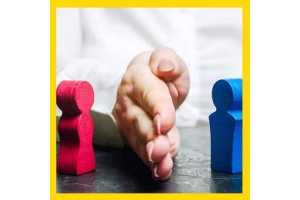Currency
January 25, 2020

The ability to control our own destiny is a very basic human desire.
While we have control over many aspects of our lives, sometimes in our workplace we lack this ability. However, this is starting to change as technology is being applied to help us optimize working conditions, especially when it comes to safety.
This is especially helpful in a warehouse setting in cases where simply performing a job can lead to injuries. In fact, 35% of workplace injuries are due to poor ergonomic practices.
To help turn that statistic around, Soter Analytics is providing wearable technology that provides information to workers on an individual basis.
While traditionally safety managers have provided information on the optimal way to perform injury-prone jobs, the responsibility is now moving over to individuals.
“We are flipping the process around,” explains Matthew Hart, CEO of Soter Analytics. “We are looking at the safety issues for one person, not a standard.”
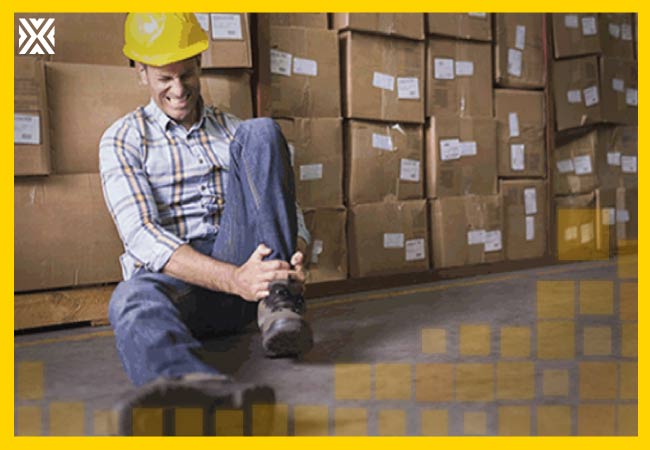
And Hart says this individual control, based on private analytical feedback, improves overall safety. He cites the example of a company of 600 employees, who used the company’s SoterSpine wearable device and saw a 55% reduction in manual handling injuries. Prior to using this technology, the company experienced a three year period where injuries remained the same.
SoterSpine uses biofeedback to create behavioral change by employing mobile apps and AI technologies. Workers can get feedback on how they are currently doing their jobs and ways to improve ergonomics.
The wearable device is attached to the back of the employee’s shirt and every time he bends or shifts position the device detects it and calculates in real-time if it’s a hazardous movement. If it is then the device will beep and vibrate.
At the end of the day, an employee can log in and see a breakdown of their movements.
“The information is then used to coach the person, based on their individual movements on how to improve,” says Hart. “There are no supervisors involved, just the employee and technology. There are no dashboards on the factory wall; it’s a positive individual experience.”
Employees are given suggestions on how to improve and videos on the app provide guidance on how to avoid injury.
In addition to determining the bending and twisting the device measures the intensity of the work. , The difficulty of a task is also measured based on the individual person. “ By looking at specific individuals we believe this will help bring more women into the field,” says Hart. “It’s an old-fashioned idea that women can’t work these jobs. We can coach on how to do the job.”
The time frame of this coaching is also something that appeals to employees. This whole experience lasts from 10-18 days, “It’s not a device that employees wear for the rest of their lives,” says Hart. “It’s a short time, high-quality training program.”
Hart points out that this shorter, specific training technique, often called microlearning, has proven to be effective as compared to traditional classroom learning in which 65% of the material is forgotten after one week.
At the end of 18 days employees can choose to continue but most repeat the program at three, six or twelve months. says Hart based on experiences with his customers which include PepsiCo, Giant Eagle, Iberia, and Travis Perkins.
Improving the health of the workforce has a number of advantages, says Hart. With the shortage of labor, employees are very choosy about what companies they will work for and a company that focuses on the safety of its employees will win out.
While we have control over many aspects of our lives, sometimes in our workplace we lack this ability. However, this is starting to change as technology is being applied to help us optimize working conditions, especially when it comes to safety.
This is especially helpful in a warehouse setting in cases where simply performing a job can lead to injuries. In fact, 35% of workplace injuries are due to poor ergonomic practices.
To help turn that statistic around, Soter Analytics is providing wearable technology that provides information to workers on an individual basis.
While traditionally safety managers have provided information on the optimal way to perform injury-prone jobs, the responsibility is now moving over to individuals.
“We are flipping the process around,” explains Matthew Hart, CEO of Soter Analytics. “We are looking at the safety issues for one person, not a standard.”

And Hart says this individual control, based on private analytical feedback, improves overall safety. He cites the example of a company of 600 employees, who used the company’s SoterSpine wearable device and saw a 55% reduction in manual handling injuries. Prior to using this technology, the company experienced a three year period where injuries remained the same.
SoterSpine uses biofeedback to create behavioral change by employing mobile apps and AI technologies. Workers can get feedback on how they are currently doing their jobs and ways to improve ergonomics.
The wearable device is attached to the back of the employee’s shirt and every time he bends or shifts position the device detects it and calculates in real-time if it’s a hazardous movement. If it is then the device will beep and vibrate.
At the end of the day, an employee can log in and see a breakdown of their movements.
“The information is then used to coach the person, based on their individual movements on how to improve,” says Hart. “There are no supervisors involved, just the employee and technology. There are no dashboards on the factory wall; it’s a positive individual experience.”
Employees are given suggestions on how to improve and videos on the app provide guidance on how to avoid injury.
In addition to determining the bending and twisting the device measures the intensity of the work. , The difficulty of a task is also measured based on the individual person. “ By looking at specific individuals we believe this will help bring more women into the field,” says Hart. “It’s an old-fashioned idea that women can’t work these jobs. We can coach on how to do the job.”
The time frame of this coaching is also something that appeals to employees. This whole experience lasts from 10-18 days, “It’s not a device that employees wear for the rest of their lives,” says Hart. “It’s a short time, high-quality training program.”
Hart points out that this shorter, specific training technique, often called microlearning, has proven to be effective as compared to traditional classroom learning in which 65% of the material is forgotten after one week.
At the end of 18 days employees can choose to continue but most repeat the program at three, six or twelve months. says Hart based on experiences with his customers which include PepsiCo, Giant Eagle, Iberia, and Travis Perkins.
Improving the health of the workforce has a number of advantages, says Hart. With the shortage of labor, employees are very choosy about what companies they will work for and a company that focuses on the safety of its employees will win out.
